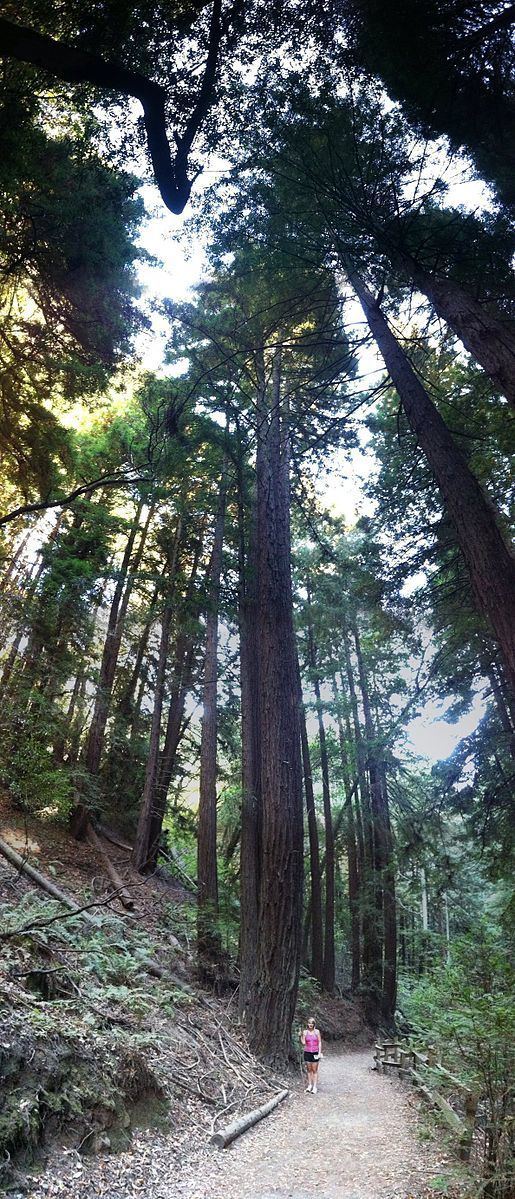Order Pinales Higher classification Redwoods | Division Pinophyta Scientific name Sequoia Rank Genus | |
 | ||
Similar Coast redwood, Conifers, Giant sequoia, Sequoiadendron, Dawn redwood | ||
Sequoia is a genus of redwood coniferous trees in the subfamily Sequoioideae of the family Cupressaceae. The only extant species of the genus is Sequoia sempervirens in the Northern California coastal forests ecoregion of Northern California and Southwestern Oregon in the United States. The two other genera, Sequoiadendron and Metasequoia, in the subfamily Sequoioideae are closely related to Sequoia. It includes the largest trees in the world.
Contents
Several extinct species have been named from fossils, including Sequoia affinis, Sequoia chinensis of China, Sequoia langsdorfii, Sequoia dakotensis of South Dakota (Maastrichtian), and Sequoia magnifica.
Etymology
The name Sequoia was first published as a genus name by the Austrian botanist Stephan Endlicher in 1847. However, he left no specific reasons for choosing that name, and there is no record of anyone else speaking to him about its origin.
The most common modern guess is that Endlicher, a published linguist as well as a botanist, named the genus in honor of Sequoyah, the inventor of the first Cherokee writing system. As far back as the 1860s, it has also been suggested that the name is instead an alteration of the Latin word for "sequence", since the species is known to be a follower or remnant of massive ancient, extinct species, and thus the next in a sequence.
However, in a 2012 article, author Gary Lowe argues that Endlicher would not have had the knowledge to conceive of Sequoia sempervirens as the successor to a fossil sequence, and that he more likely saw it as completing a morphological sequence of species in regards to seeds per cone scale.
Paleontology
The genus Sequoia first appears in the fossil record as Sequoia jeholensis, found in Jurassic deposits of South Manchuria. By the late Cretaceous it was already established in Europe, parts of China, and western North America. Comparisons among fossils and modern organisms suggest that by this period Sequoia had already evolved a greater tracheid diameter that allowed it to reach the great heights characteristic of the modern Sequoia sempervirens (coast redwood).
Sequoia was not dominant in the tropical high northern latitudes, like Metasequoia, a redwood whose deciduous habit gave it a significant adaptive advantage in an environment with 3 months of continuous darkness. However, there still was prolonged range overlap between Sequoia and Metasequoia which could have led to hybridization events that created the modern hexaploid Sequoia sempervirens.
A general cooling trend by the late Eocene and Oligocene reduced the northern ranges of Sequoia. By the end of the Miocene and beginning of the Pliocene, Sequoia fossils were morphologically identical to the modern Sequoia sempervirens. Continued cooling in the Pliocene meant that Sequoia, which is extremely intolerant to frost due to the high water content of its tissues, also became locally extinct in response to the extreme cooling of Europe and Asia In western North America it continued to move south through coastal Oregon and California, surviving due to the abundant rainfall and mild seasons. The Sierra Nevada orogeny further isolated Sequoia because the snowy mountain peaks prevented eastward expansion. The Pleistocene and Holocene distributions are likely nearly identical to the modern S. sempervirens distributions.
